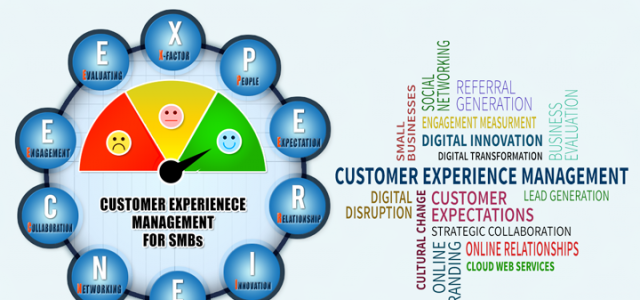There appears to be a growing challenge for brands as to what and how marketing can help meet their organisational objectives and the role it plays.
But the simple truth is the reason why so many marketing strategies fail is that there simply is no business case and secondly, a marketing strategy sits in a department silo, disconnected from the rest of the organisation
Even more concerning is if the strategy is not understood internally, it can be seen as purely a campaign led initiative with little connection to what and where the organisation is trying to get to.
And this means it’s driven purely by tactics, rather than engineered through a strategy
Let’s take the rise of Content Marketing which has a habit of turning into a “commodity-based approach to branding” according to this article on The Drum. It goes on:
“In pursuit of relevance, most brands chase after trends…hundreds of companies are doing exactly the same thing with the same generic list of trends”
And this is where a number of content strategies fall flat – they run right into the tactical elements of content, for example, blog posts, videos, whitepaper downloads, PDFs — these are all fine to do but the mindset we are looking to change is:
Start with an organisations vision & ensure your audience would benefit from the content being produced
In other words, will this initiative help to achieve what the goals and objective are for your organisation?
So how do you start to even build a vision and where to start?
It’s important to remember you can make small changes now within your business and here are a few suggestions.
1) Can you tie this initiative back to an over-arching business goal? This will help when it comes down to getting boardroom approval and also when you look to gain senior management buy-in…
2) Your organisation’s top-level objectives should help support and provide you with a link to connect what you are creating (the strategy) and how to articulate this in the context of where your organisation aims to get to
3) Understand your Internal Audience – Think about bringing together all the various departments and internal functions that are currently creating and have a remit or requirement to create content that is distributed outside of your organisation.
4) Question your Internal Departments to understand the wider context and the role a marketing approach could take to support their needs:
- What is it they are trying to do?
- What is their requirement for this content being produced?
- What is the pain point they are trying to address?
Doing this will help you identify your business purpose and the role content (for example) will play in meeting your one overall vision.
From here, this should help you define better what it is you as a business is actually trying to fulfil.
For example, are we considering a content marketing approach to help with the objective of:
- Building a subscribed audience?
- Or is it to grow more leads
- or maybe to win more customers?
- or, brand awareness?
What’s missing with the majority of content marketing initiatives, for example, is a lack of strategy or a framework from which to follow that connects the organisational objectives to the content marketing approach.
A great example of a global brand that has positioned itself around a story in building a subscribed audience is credit card company AMEX and the launch of their online Open Forum.
This is a platform built by AMEX to bring together small business owners where they can connect and discuss with other business owners the challenges they have in running their business.
AMEX is not “selling” on Open Forum, more providing a platform that answers burning questions of start-ups and SME’s in running a business.
The website provides some key indicators that it has been built and tailored for their audience first as articulated in the following three points that help to tie this strategy together with total organisation support:
- Company Objective: To build a subscribed audience
- Audience: Small Businesses/SME’s
- Pain Points: How to run a business, key issues and challenges that need addressing from a voice of authority
There is a clear call to action associated with their content pages for business owners to sign up an receive valuable business advice. It’s a great example of building on the AMEX brand name and the types of audience and communities it resonates with
Question: Is there a similar community your brand could be helping or could be building your story from?
5) Educating Internally
Start to think about building a business case before launching into the more tactical elements of content marketing.
This will mean you will need to build connections and empathy with your wider organisation and indeed the senior stakeholders that they are clear as to the role of marketing and what/how it can support their own needs.
There are a number of initiatives you and your team could consider to start to build connections with wider teams and stakeholders such as:
- Sharing Performance – Rather than sharing your KPI’s, ask what metrics would be of interest to your wider teams and provide them with visibility on performance
- Workshops – Educate and upskill from within your organisation. Explain the opportunities marketing has in supporting the goals and objectives of each department. This could simply be an initiative of asking your team to provide a presentation of a workshop to the wider teams across the business
Creating in-house training is going to become essential in taking internal staff on a flexible approach to learning about the opportunities and ways everyone can support a content led approach.
Addressing how your marketing approach is structured and building out organisation wide support on the strategy to be taken is going to be essential to the wider and long-term vision as to how marketing is regarded.
Marketing is not a campaign driven exercise
Connecting with your internal stakeholders is going to be crucial to help position marketing as not a siloed campaign-driven approach but as a strategic vision to support the brand and its long-term business goals
But the simple truth is the reason why so many marketing strategies fail is that there simply is no business case and secondly, a marketing strategy sits in a department silo, disconnected from the rest of the organisation
Article by channel:
Everything you need to know about Digital Transformation
The best articles, news and events direct to your inbox
Read more articles tagged: Digital Marketing, Featured







